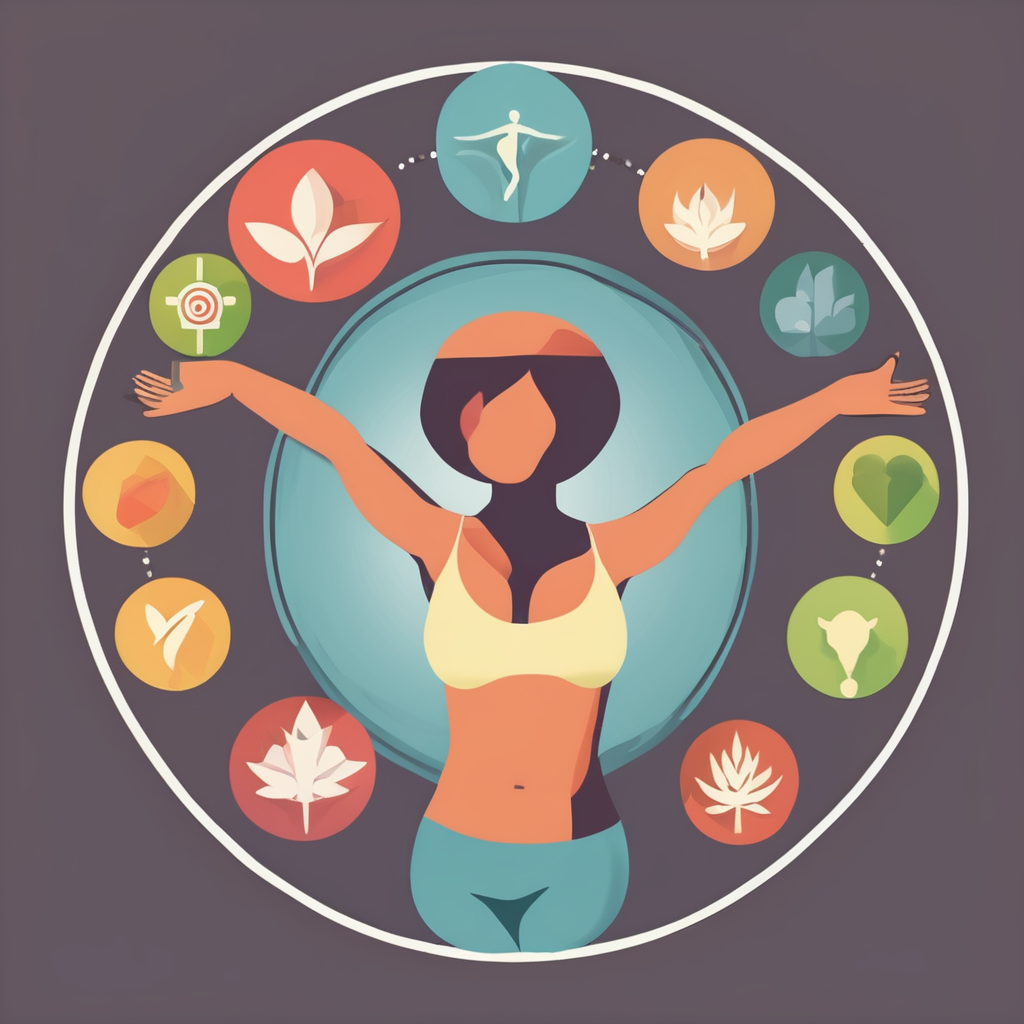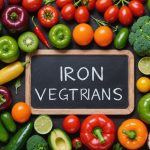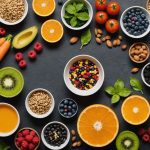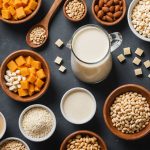Understanding Iron Deficiency in Vegetarians
Iron deficiency is a prevalent concern among vegetarians in the UK. It arises from the body’s need for iron, which is often not met by plant-based diets. Vegetarians might face unique dietary challenges, as plant sources contain non-heme iron, which is less easily absorbed compared to heme iron found in animal products.
Symptoms and Health Implications
Individuals with iron deficiency commonly experience fatigue, weakness, and paleness. Other symptoms might include dizziness and shortness of breath. The health implications of prolonged low iron levels can be severe, leading to conditions like iron deficiency anaemia. It’s crucial for vegetarians to recognize these signs early and seek solutions to maintain optimal health.
Have you seen this : Boost Your Health: Creative Ways to Add Superfoods to the UK Diet
Addressing Iron Needs in Vegetarian Diets
To mitigate these risks, it is important for vegetarians to address their dietary needs proactively. Consuming iron-rich foods such as lentils, beans, tofu, and fortified cereals can be beneficial. Furthermore, pairing these foods with vitamin C-rich items enhances iron absorption. Emphasizing a balanced diet and possibly supplementing iron under medical guidance ensures those adopting vegetarianism do not compromise their iron levels.
Iron-Rich Foods for Vegetarians
Iron is a vital mineral often sourced from animal products, but vegetarians can turn to plant-based iron sources for their dietary needs.
Also to see : Top Non-Dairy Calcium Rich Foods for Lactose-Intolerant Individuals in the UK
Legumes and Pulses
In a vegetarian diet, legumes and pulses serve as excellent iron-rich foods. Lentils, chickpeas, and black beans are among the top contenders. However, not all legumes are created equal; for instance, lentils offer a higher iron content compared to peas. To boost iron absorption from these foods, consider pairing them with vitamin C-rich items like bell peppers or citrus fruits. Methods such as soaking, sprouting, or fermenting legumes can further enhance iron absorption, making these staples more nutritious.
Whole Grains
Incorporating whole grains into your meals is beneficial not just for fibre, but also for iron content. Quinoa and oats are prevalent in the UK as iron-rich options. For optimal benefits, consume them alongside foods high in vitamin C to enhance absorption. Try swapping refined grains with whole grains in your meals to maximize iron intake.
Nuts and Seeds
Nuts and seeds are versatile vegetarian options loaded with iron. Almonds, cashews, and pumpkin seeds are top choices. A small handful daily helps maintain effective iron levels. These can be easily added to salads, smoothies, or as snacks, creatively making them part of a delicious and nutritious vegetarian diet.
Supplements and Fortified Foods
Exploring nutritional guidance is critical when considering iron supplements. It’s commonly recommended for individuals experiencing iron deficiencies, such as pregnant women or those with dietary restrictions. These supplements can effectively combat anaemia and fatigue when used appropriately. However, it’s essential to consult healthcare professionals before beginning any supplementation to avoid adverse effects from excessive iron intake.
In the UK, fortified foods offer a viable alternative or complement to supplements. These foods are enriched with additional nutrients to support daily nutritional intake. Common examples include:
- Breakfast cereals
- Bread
- Plant-based milk alternatives
These fortified foods not only contribute to iron intake but also provide various other essential nutrients, supporting a balanced diet.
When opting for iron supplementation, adhering to safe supplementation practices is paramount. Guidelines advise individuals to follow dosage instructions meticulously and to be aware of potential side effects, such as constipation or stomach upset. Engaging in regular check-ups can ensure iron levels remain optimal without compromising health.
Considering both iron supplements and fortified foods is a holistic approach to satisfying nutritional requirements while minimizing health risks.
Enhancing Iron Absorption
Understanding the intricacies of iron absorption is pivotal to maintaining optimal health. Integrated dietary strategies, alongside nutrients like vitamin C, can significantly enhance this absorption.
Role of Vitamin C
Vitamin C plays a crucial role in maximizing iron absorption. Consuming foods rich in this vitamin, such as citrus fruits, strawberries, and broccoli, can greatly enhance your body’s ability to absorb iron. When paired meticulously, these foods work synergistically with iron-rich options like spinach or lentils.
The method of combining these foods is equally important. For instance, adding a squeeze of lemon juice over a spinach salad or including orange sections in your morning cereal optimises absorption. This pairing transforms the non-heme iron found in plant sources into a form more readily absorbed by the body. Timing is also key; aim to consume vitamin C-rich foods at the same meal as iron-rich items, which engages these nutrients’ full potential.
Foods to Avoid
Certain dietary items, however, can inhibit iron absorption. Foods containing high levels of calcium, like dairy products, can impede this process. Tannins found in tea and coffee, or phytates in whole grains, also slow absorption. To sidestep these hindrances, consider separating these foods from iron meals by at least two hours.
Meal Planning for Improved Iron Intake
Iron intake is crucial, particularly for those following a vegetarian diet. Effective meal planning is the key to ensuring balanced nutrition. Incorporating iron-rich meals into your weekly plan can significantly improve iron absorption levels.
Sample meal plans that feature iron-rich foods include combinations such as spinach and chickpea curry for lunch or a lentil and kale stew for dinner. These dishes provide an excellent source of iron, particularly when paired with foods high in vitamin C, which enhances iron absorption.
When creating vegetarian recipes, consider ingredients like beans, lentils, tofu, and dark green leafy vegetables as your base. These foods are naturally high in iron content. A delicious spinach and tofu stir-fry, for instance, not only packs a nutritional punch but is also quick and easy to prepare.
For those with busy schedules, batch cooking can save time and ensure meal consistency throughout the week. Prepare larger portions of iron-rich meals, such as a quinoa and black bean salad, and store them in the fridge or freezer. This approach allows you to enjoy nutritious meals even on the busiest days.
Overall, thoughtful meal planning and creative recipe choices can lead to a significant improvement in nutritional intake without compromising on taste.
Understanding Iron Needs for Different Life Stages
Iron needs fluctuate significantly across different life stages, and understanding these changes is crucial for maintaining optimal health.
Iron Requirements Based on Age and Gender
Iron needs differ for men, women, and children. For instance, adult women aged 19-50 generally require more iron than men due to menstruation. Post-menopausal women, however, require less. Children and adolescents have increased iron needs due to growth spurts and development. It is essential to tailor dietary choices to these changes, ensuring adequate intake for each age group.
Considerations for Pregnant and Lactating Vegetarians
Pregnant and lactating women, especially vegetarians, must pay close attention to their iron intake. The body’s demand for iron increases significantly during pregnancy to support fetal development and prepare for blood loss during childbirth. Vegetarians are recommended to explore multiple plant-based iron sources, like lentils, soybeans, and fortified cereals, and consider vitamin C-rich foods to enhance iron absorption.
Dietary Choices for Children and Adolescents
Children and adolescents often need more iron to support rapid growth and cognitive development. Incorporating a variety of iron-rich foods, such as lean meats, beans, and dark leafy greens can help meet these needs. Parents should encourage a balanced diet to promote healthy growth and development during these crucial stages.











